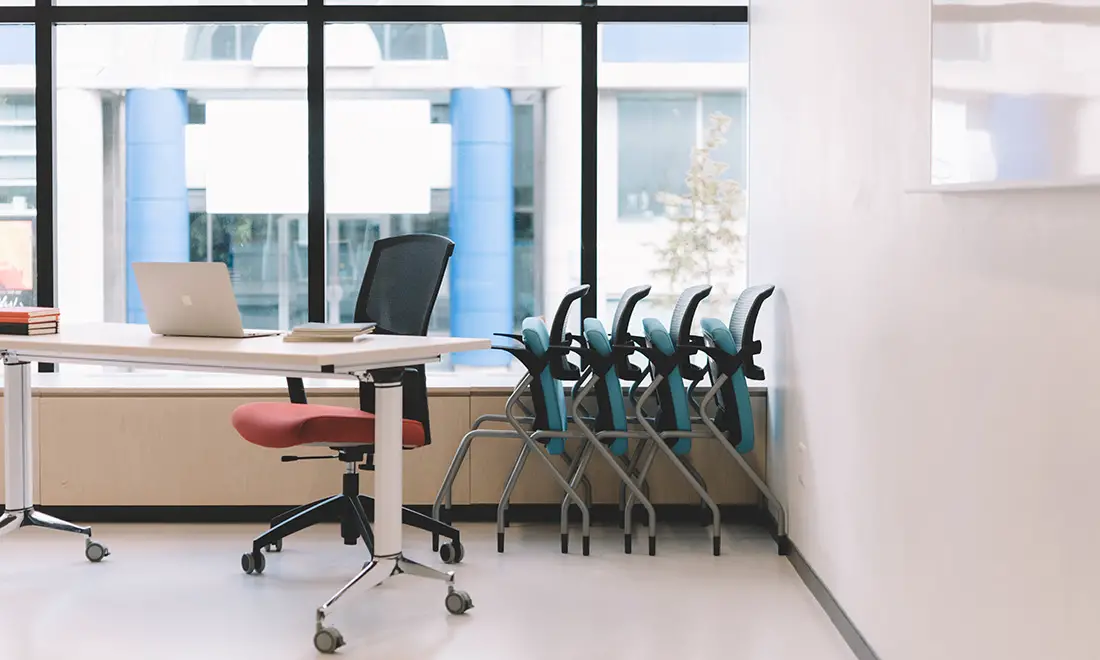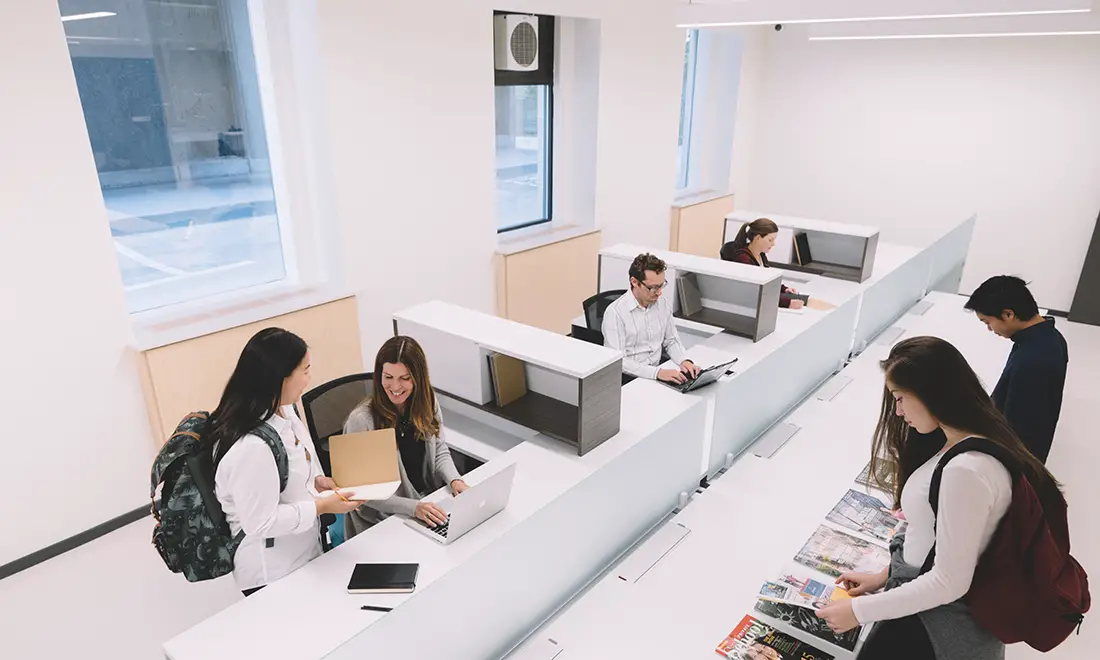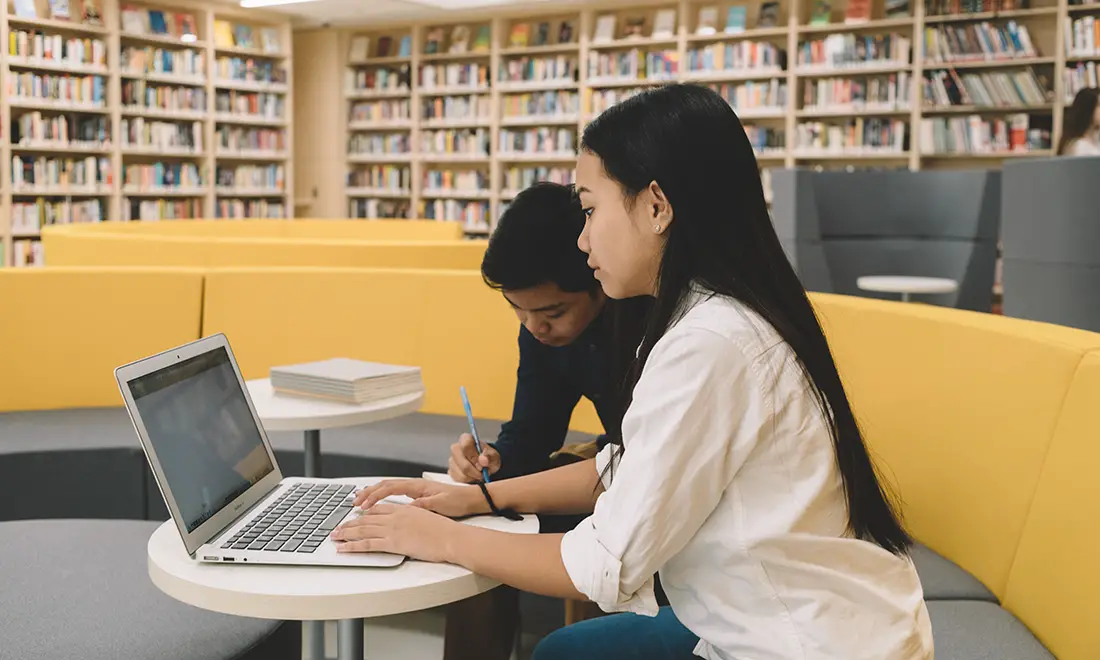When The York Junior and Middle School—a private school in the heart of Toronto—embarked on a significant interior renovation, it moved beyond the traditional learning model we see in many classrooms. The approach was simple: create design features that are so unique, you wouldn’t even think you’re in a classroom.
In The York School’s re-imagined learning spaces, students are no longer confined to rigid seating arrangements. Traditional seating arrangements center the student towards the teacher in a lecture format. With The York School, students have the flexibility to sit where they like throughout the day in a dynamic seating environment.
By being able to adapt the room to various learning styles using modular seating, school projects and work of any variety is enhanced. Mobile and stackable chairs, flip-tops and mobile tables all ensure a level of flexibility that makes it easy for classrooms to transform for tests, exams, group projects and independent study.
Ian Johns, Facilities Manager at the school, explains: “In today’s learning environment, we are no longer limited to just a chair and a desk. We need to accommodate a much broader range of needs in terms of student learning styles.”

Image of The York School library:https://www.globalfurnituregroup.com/assets/generated_images/resources/projects/5139/5139-0.jpg
Easy to see benefits
Asides from the aesthetic appeal of reinventing a space with modern furniture, there’s numerous benefits to creating a fluid learning environment with seating:
Eliminate hierarchy
Instead of traditional classroom figurations which reward students who are more vocal and confident, quiet and shy students who typically sit at the back can feel encouraged to participate in the informal environment at The York School. Student-centered seating arrangements encourage every student to participate; while teachers and staff work in the open, making it easy for students to ask questions and start a conversation about current assignments.
Motivation
By giving students more autonomy in their seating arrangements, they are motivated to learn at their own pace. Flexible seating empowers students by giving them some degree of control, allowing them to choose where they work and with whom. In fact, studies have found that increased autonomy can foster goal orientation, task value, and self-efficacy.
Teamwork and innovation
Rather than sitting in rows of desks all day, students are encouraged to work in pairs, small groups, or discuss as a whole class. This helps them develop necessary skills including communication, creativity, teamwork and critical thinking skills.
Physical health
A University of New Mexico publication reports that even if children exercise in the morning or evening, sitting the rest of the day at a desk, rarely getting up, creates unhealthy blood vessel changes along with heart problems. Flexible seating encourages students to change posture and movement throughout the day; from kneeling on cushions, to standing, to bouncing on exercise balls. Published author Eric Jensen’s research confirms that students in a greater variety of posters can enhance the learning process.
Around the world
The York School is only one example of educational institutions that have adopted the modern multi-purpose learning environment. For instance, in the New School at Moscow, Russia, lecture room chairs are cushions stacked across lecture hall steps. The collapsible stage and transformable sofa-podiums accommodates a presentation for students of 3–4 classes at once (see image above):
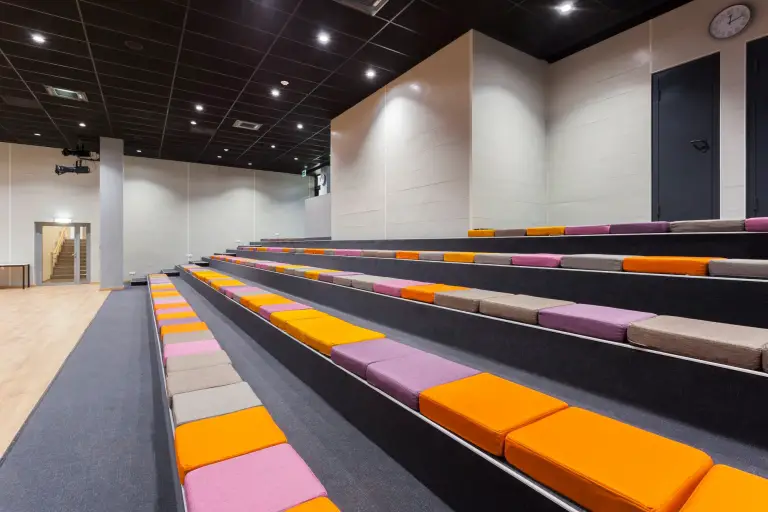
Image: https://educationsnapshots.com/photos/1909/
In the Anglo Colombian Primary School—created by architect Daniel Bonilla in Bogotá, Colombia—atypical and even avant-garde design enhance learning through geometry, colors and nature. Pictured below, turquoise reading nooks captivate young readers, with additional seating and cushions stored above; while open study spaces painted green resemble trees and forests. In these dynamic learning space, students are encouraged to move, explore and be creative.
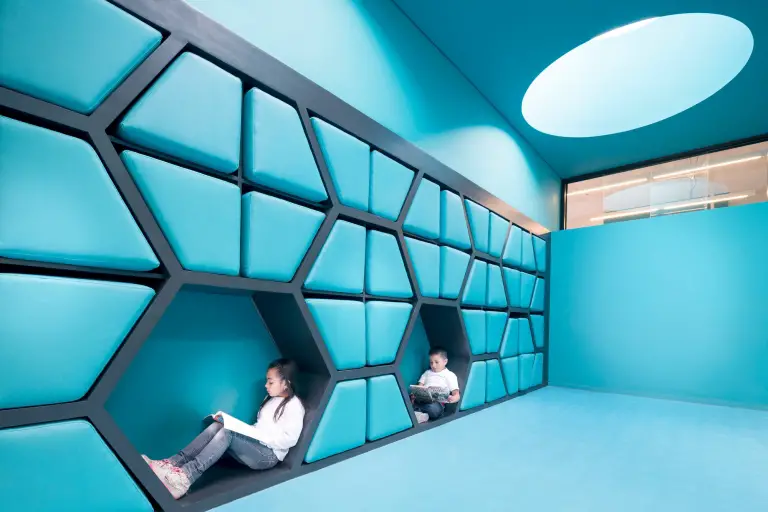
Image: https://educationsnapshots.com/photos/1862/

Image: https://educationsnapshots.com/photos/1832/
A flexible learning environment
Flexible seating is essential when it comes to establishing a dynamic learning environment, yet a level of whimsy and an openness in concept makes this flexibility come to life. When it comes to learning, students not only need to feel comfortable with where and how they’re seated but also should feel encouraged to work with different people and groups. By doing this, we prepare students for many modern industries that require great skill in collaboration, innovation, and creativity. While they’ll be plenty of moments where students will need to sit and be still, crafting environments at a young age that spur an eagerness to collaborate and learn in different ways and positions will aid young minds to take on anything and think critically.


